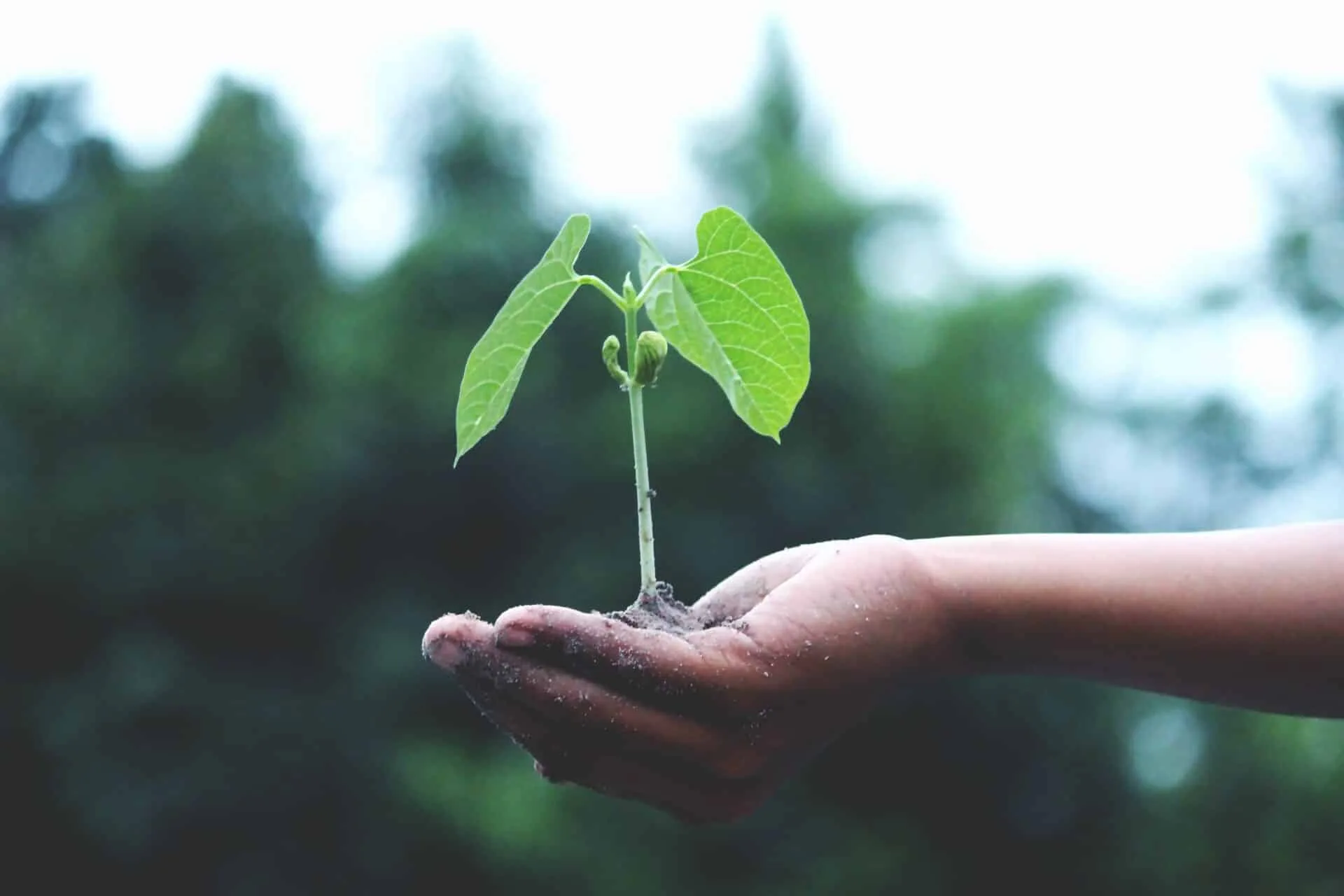If you are looking to grow blueberries in your garden or yard, then you need to make sure that the soil has a low pH in order for the blueberries to thrive. The ideal pH for blueberry plants is 4.5-5.5, which is considered acidic. If your soil does not have a low enough pH, then you can take steps to lower the pH and make it more acidic for the blueberries. In this article we will discuss how to make soil more acidic for blueberries.Acidic soil is a type of soil with a pH level of less than 7.0, which is characterized by low levels of calcium, magnesium, and other basic nutrients. It is often found in areas with high rainfall and can be caused by pollution or the accumulation of organic matter. Acidic soil can be difficult for plants to grow in because it prevents important nutrients from being absorbed. To make acidic soil more suitable for growing plants, it must be neutralized with lime or other basic compounds.
How to Test Soil pH
Testing soil pH is an important step in maintaining a healthy garden or lawn. The pH of soil can affect the availability of nutrients for plants, and it can also be a factor in determining which types of plants will thrive in a particular area. Soil pH testing is relatively easy and inexpensive, and it can provide valuable information that will help you create and maintain a beautiful landscape.
There are two main methods for testing soil pH: using a soil test kit or sending samples to a laboratory for analysis. Soil test kits are available at most garden centers and home improvement stores, and they usually come with instructions on how to use them properly. These kits typically measure the amount of acidity or alkalinity in the soil by using liquid reagents that react with the components of the soil sample. The results are then compared to a chart that indicates the exact pH level.
Sending samples to a laboratory is another option for testing soil pH, but it is more expensive than using test kits. Laboratories usually have specialized tools that can provide more accurate readings than what you would get from a kit. However, since this method requires sending samples off-site, it may take several days before you get your results.
It’s important to keep in mind that different types of soils may require different methods of testing. For example, sandy soils tend to be more acidic than clay soils, so they may require different reagents or procedures when testing for pH levels. Additionally, some regions have naturally higher levels of acidity or alkalinity than others, so it’s important to take these factors into account when deciding how best to test your soil.
No matter which method you choose, testing your soil’s pH can provide valuable information about your landscape and help ensure that your plants receive all the nutrients they need to thrive. With just a few simple steps, you’ll be able to quickly determine what type of environment your plants prefer and make sure they have everything they need to grow healthy and strong!
Rainfall
Rainfall can have an effect on soil acidity, as rainwater is naturally slightly acidic due to the presence of carbon dioxide in the atmosphere. This acidity can be further increased if the atmosphere is polluted with additional carbon dioxide and other pollutants. As acidic rain falls onto soil, it can slowly leach away calcium and magnesium, which are important components of soil buffering capacity. This can lead to increased acidity in the soil over time.
Vegetation
Plants play an important role in controlling soil acidity levels. Through their root systems, plants absorb minerals from the soil and release ions such as hydrogen ions into the soil solution. This process increases the acidity of the soil as more hydrogen ions are released into it. In addition, some plants release organic acids into the soil through their roots, which can further increase its level of acidity.
Soil Type
The type of soil can also affect its acidity levels. For example, sandy soils tend to be more acidic than clay soils because they don’t have a high content of buffering minerals such as calcium and magnesium that help neutralize acids in the soils. Clay soils usually contain more buffering minerals than sandy soils, so they tend to have higher pH levels.
Fertilizers
The use of fertilizers can also affect soil acidity levels depending on their composition and application rate. Fertilizers that contain ammonium or nitrate-based nitrogen compounds can increase the level of hydrogen ions in the soil solution by releasing them when they break down into simpler forms by microbial action or through chemical reactions with other substances present in the environment. This leads to a decrease in pH levels and increased acidity.
Soil Management Practices
The way that land is managed can also affect its pH level over time. Practices such as tilling or plowing can cause a decrease in organic matter content over time, leading to increased acidification due to a lack of buffering capacity compared to undisturbed soils with higher organic matter content. In addition, crop rotation practices that involve planting legumes instead of grasses or grains can increase nitrogen supply and thus result in higher levels of hydrogen ions released into the environment leading to greater soil acidification.
Benefits of Acidic Soil for Blueberries
Blueberries are one of the most popular fruits, and their delicate flavor is enjoyed all over the world. Blueberries require specific soil conditions in order to thrive, and acidic soil is one of the most important factors for optimal growth. The ideal pH range for blueberry plants is 4.5-5.5, which makes acidic soil the perfect growing environment. By understanding the benefits of acidic soil for blueberries, gardeners can maximize their plant’s productivity and ensure a healthy harvest.
Acidic soil helps blueberry plants absorb essential nutrients such as phosphorus, magnesium, and calcium, which helps them grow larger and produce a higher quality fruit. The acidity of the soil also helps to protect blueberry roots from fungal diseases that can cause root rot and other damage. Additionally, acidic soils are less prone to weeds than neutral or alkaline soils, so plants can focus all their energy on producing delicious berries.
Acidic soils also help to maintain proper moisture levels in the root zone of blueberry plants. This prevents waterlogging that can lead to root rot and other issues with plant health. Soil acidity also reduces leaching from fertilizers, which helps to conserve resources while still providing necessary nutrition for healthy growth.
Overall, acidic soils provide many beneficial properties that help blueberry plants flourish in a way that neutral or alkaline soils cannot match. By understanding these key advantages of acidic soils for blueberries, gardeners can create an optimal growing environment that will lead to a large harvest of sweet and juicy berries every season!
Adding Amendments to Make Soil More Acidic
Soil acidity is an important factor in determining what types of plants can be grown in a particular area. For gardeners and farmers who want to grow acid-loving plants, adding amendments to the soil can help make it more acidic. There are several different amendments that can be used to lower the pH of the soil, including sulfur, composted leaves, and peat moss.
Sulfur is a natural mineral that can be added to the soil to lower its pH. It works by releasing sulfuric acid into the soil when it is mixed with water. Because sulfur can take several weeks or even months to take effect, it is best applied in late winter or early spring before planting season begins.
Composted leaves are another amendment that can be used to make soil more acidic. Leaves from acid-loving trees such as dogwood or holly should be collected and composted before being added to the soil. The composting process helps break down the leaves into smaller particles which will release their acids more quickly when mixed with water.
Peat moss is another organic amendment that can be used to lower the pH of soil. Peat moss is composed of partially decomposed organic matter, which releases its acids slowly over time when mixed with water. Peat moss also helps retain moisture in the soil and adds important nutrients for plants such as nitrogen and phosphorus.
Adding amendments such as sulfur, composted leaves, and peat moss are all effective ways of making soil more acidic so that acid-loving plants can thrive in your garden or field. It is important to remember that these amendments need time to work their magic, so it’s best to add them well before you plan on planting your crops or flowers.

Using Fertilizers to Increase Acidity
Soil acidity is an important factor in maintaining healthy plants. It affects the availability of nutrients for the plants, as well as the microbial activity in the soil. Fertilizers can be used to help increase soil acidity and maintain optimal conditions for plant growth.
There are two main types of fertilizers used to increase soil acidity: ammonium sulfate and sulfur-coated urea. Ammonium sulfate is a nitrogen-based fertilizer that releases ammonia when mixed with water. This ammonia can help lower the pH of the soil, making it more acidic. Sulfur-coated urea is another type of fertilizer that releases sulfuric acid when mixed with water, further increasing the acidity of the soil.
When using fertilizers to increase soil acidity, it is important to consider the type of plants being grown and their specific needs. Some plants require higher levels of acidity than others, so choosing a fertilizer that provides adequate levels for each plant is essential. It is also important to use fertilizers in moderation and not over-apply them, as this can lead to nutrient imbalances in the soil and damage to plants.
In addition to using fertilizer, other methods can be used to increase soil acidity. Adding organic matter such as compost or manure can help lower pH levels naturally over time. Adjusting irrigation water pH can also be effective in increasing acidic conditions in soils. Additionally, some amendments such as aluminum sulfate or iron sulfate can be added directly into soils to lower pH levels and create more acidic conditions for certain types of plants.
Overall, using fertilizers is an effective way to increase soil acidity and maintain optimal conditions for plant growth and health. However, it is important to consider all factors before applying any fertilizer and use them in moderation for best results.
Applying Mulch to Lower pH Levels
Mulch can be an effective way to adjust soil pH levels in your garden. Adding mulch to your soil helps create an environment which is more acidic, and can help reduce the pH levels of your soil over time. This can be beneficial for many types of plants, as some plants prefer a more acidic soil environment.
When applying mulch, it is important to keep in mind that the type of mulch you choose will affect the acidity level of your soil. Some types of mulches, such as pine needles and pine bark, are naturally more acidic and will help lower the pH levels in your soil quicker than other types. Cedar chips and cypress bark are also good choices for lowering pH levels in your garden.
In addition to choosing the right type of mulch, it is also important to apply it properly. The depth at which you apply the mulch will also affect how quickly it lowers the pH levels in your soil. Generally, a layer of 2-4 inches is best for most mulches. It is also important to use an organic fertilizer when applying mulch, as this will help speed up the process of lowering pH levels in your garden.
Finally, it is important to remember that adding too much mulch can actually raise the pH level of your soil instead of lowering it. Make sure not to overapply, as this could be detrimental to any plants you have growing in your garden. Additionally, make sure you test the pH level often while using this method so that you know when you have reached an acceptable level for your plants.
Adjusting Irrigation Practices for Acidic Soil
Acidic soil is a common problem in many parts of the world. It can cause poor plant growth and lead to nutrient deficiencies. To ensure healthy crop yields, growers must adjust their irrigation practices to account for the acidic nature of the soil.
The key to successful irrigation for acidic soils is to properly manage the pH levels. This can be done by adjusting the water’s alkalinity or acidity, as well as adding lime or sulfur to the soil. Additionally, it is important to monitor the salinity of the irrigation water, as high salt concentrations can further acidify the soil and lead to poor plant health.
Growers should also be mindful of how much water they are applying. Overwatering can cause leaching of essential nutrients from the soil, leading to nutrient deficiencies and poor plant growth. Conversely, under-irrigation can also cause problems as plants cannot access enough moisture from dry soils. Monitoring irrigation practices and adjusting them accordingly is key for successful crop yields on acidic soils.
Finally, it is important to use quality irrigation equipment when working with acidic soils. Poorly maintained equipment can lead to clogging issues that prevent proper water distribution throughout a field or garden space. Growers should take special care when cleaning and maintaining their irrigation systems in order to ensure they are operating efficiently and effectively on acidic soils.
By following these tips for managing irrigation practices on acidic soils, growers can help maximize crop yields while minimizing nutrient deficiencies and other issues associated with this type of soil condition. With careful management and attention, growers can improve their operations and achieve better crop yields in spite of an acidic soil environment.

Conclusion
Making soil more acidic for blueberry plants is not a difficult process. First, it’s important to test the soil’s pH level to determine how acidic it needs to become in order to be suitable for blueberries. From there, there are several different ways to make the soil more acidic, including adding sulfur, peat moss, aluminum sulfate, or pine needles. Each of these materials should be added according to the instructions on the packaging and with careful consideration of how much is needed for your particular plot of land. With careful monitoring and attention to detail, the soil can be adjusted properly and will provide a healthy environment for blueberry plants.
Overall, making soil more acidic for blueberries requires thoughtful research and preparation. With proper planning and execution, you can ensure that your blueberry plants have the best chance of surviving and thriving in your garden.



